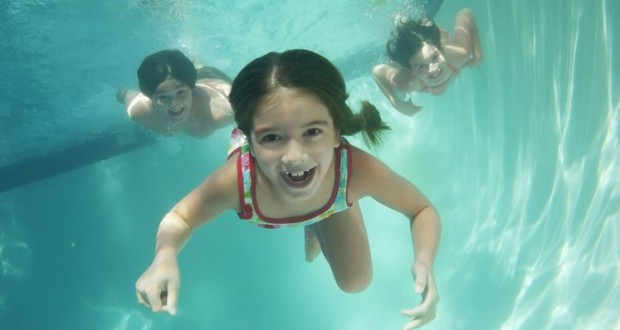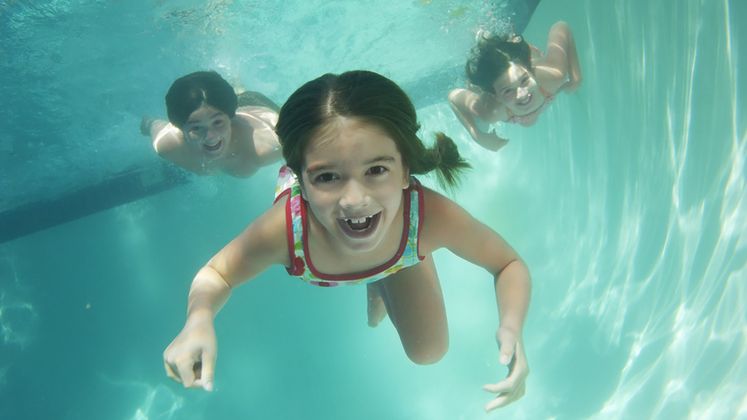Faulty pool lighting and bad wiring are the greatest electrical threats to safety, but can easily be eliminated by regular inspection, maintenance and adherence to local and national codes.
By Paul Netter
Don’t swim with shocks.
It’s a nice play on words in a Consumer Product Safety Commission fact sheet, but there’s nothing nice about the hidden dangers it warns of in and around swimming pools with the summer in full swing. The spring electrocution of a 7-year-old boy in his family’s Miami swimming pool is a tragic worst-case example, but another non-fatal Miami accident where three children were badly shocked is instructive as well.
Faulty pool lighting and bad wiring, respectively, are suspected in both accidents. In fact,underwater lights and their wiring are the greatest potential electrical hazards inside a pool since it can’t be said enough that water and electricity don’t mix. A pane of glass and a rubber seal are often swimmers’ only protection from electrical wiring.
Any water inside the underwater light fixture — the presence of mold or rust, buzzing noises or flickering lights is a tip-off — is very dangerous, but so is a power system that is not well-grounded and aging or corroded wires. These risks are only heightened if lighting and circuits aren’t protected by Ground Fault Circuit Interrupters (GFCIs). And older pools may not only have degraded lighting fixtures, but also may not have GFCIs on underwater lighting circuits. If these issues exist, they should be updated immediately.
“People should have a qualified electrician inspect their underwater lights to make sure that junction boxes and wiring connections are properly and safely installed,” said Don Neal, director of Corporate Environmental, Health and Safety at Southern California Edison (SCE), which also offers a pool-pump rebate program to assist customers. “In addition to fixing any problems, that electrician should upgrade your pool, as well as your hot tub or spa, in accordance with local codes and the National Electrical Code.”
GFCIs should also be used on pumps and electrical equipment, such as heaters, used with pools, spas and hot tubs and on all outlets within 20 feet of the water’s edge to protect people from shocks.
These are all very important steps because there have been 60 electrocutions and nearly 50 serious electrical shocks in and around swimming pools in the U.S. since 1990, according to the safety commission. The commission said some of the deaths and shocks occurred during attempted rescues of shock victims because the rescuers were unaware of the electrical hazards.
Another safe move is to have an electrician downgrade pool lighting from a potentially deadly 120 volts to 12 volts. The 120-volt lighting systems are particularly prevalent in older pools and GFCIs are recommended on any lighting system 15 volts or greater.
“The lower voltage is simply less dangerous,” said Neal “In case of a broken glass or leakage into an underwater light, you should avoid having 120 volts introduced into your water. Landscape lighting should also be powered by a low-voltage system to prevent shocks on a rain-soaked lawn.”
A well-ground power system is also very important since it adds critical protection by guaranteeing that if something goes wrong, the power flows to the ground and not to those in the pool.
“Pool owners should also make sure that electrical wires and junction boxes are a minimum of five feet away from water, as also required by the National Electrical Code,” said Neal.
As for other hazards outside the water, a permanent or storable pool should never be built or set up underneath power lines (if this exists, there are clearance requirements, but pool owners should consult their local inspection agency). Long-handled cleaning tools also should be used away from power lines and electrical cords should be kept at least five feet away from the pool.
Neal offers an additional warning on the electrical cords, suggesting that, “When possible, people should use battery-operated appliances and not cord-connected ones in and around a pool, spa or hot tub.”
Meanwhile, pool owners should always have an emergency plan within view of pool users and power switches should be labeled for pool, hot tub and spa equipment and lighting so they can be turned off quickly during an electrical emergency. In addition, a fiberglass Shepherd’s crook should be used to remove any victims from the water, CPR should be administered and 911 should be called.
As for rescuers not taking these precautions, they risk serious injury if they touch a conductive fixture or enter the water before the current is stopped.
“Pool electrical accidents are easily prevented,” said Neal. “But pool owners must follow state-mandated codes, conduct proper inspection and maintenance and use qualified electricians to achieve that prevention.”
 Westside Story Newspaper – Online The News of The Empire – Sharing the Quest for Excellence
Westside Story Newspaper – Online The News of The Empire – Sharing the Quest for Excellence





